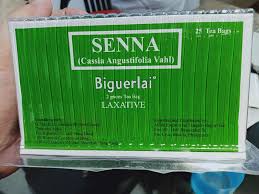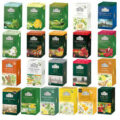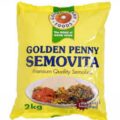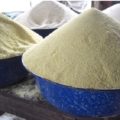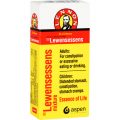The label on Biguerlai tea lists its primary ingredient as senna, which the U.S. National Library of Medicine explains is an herb commonly used as an over-the-counter laxative. Chemicals found in senna called sennosides irritate and stimulate the lining of the bowel, making them effective for relieving constipation; however, there is not enough evidence to determine senna’s effectiveness for weight loss, the purpose for which Biguerlai Tea advertises itself.
How is Biguerlai Tea used?
The most common application for senna tea is to stimulate bowel movements and alleviate constipation. The primary active compounds in senna leaves are known as senna glycosides, or sennosides. Sennosides cannot be absorbed in your digestive tract, but they can be broken down by your gut bacteria. This breakdown of sennosides mildly irritates the cells in your colon, an effect that stimulates intestinal movement and produces a laxative effect.
Senna is an active ingredient in many popular over-the-counter laxative medications, such as Ex-Lax and Nature’s Remedy. For most people, it will stimulate a bowel movement within 6–12 hours. Because of its laxative effects, some people use senna tea to prepare for colonoscopies. Some people may also use senna tea to relieve discomfort associated with hemorrhoids.
Hemorrhoids are swollen veins and tissues in the lower rectum that can cause bleeding, pain, and itching. Chronic constipation is a major cause, and minor bouts of constipation can irritate preexisting hemorrhoids. However, senna’s efficacy for relieving hemorrhoid symptoms has not been thoroughly studied. Read: Ahamed Tea: Health Benefits and Side Effects
Biguerlai Tea should not be used for weight loss
Senna is increasingly included in herbal teas and supplements that claim to boost metabolism and promote weight loss. These products are often referred to as “skinny teas” or “teatoxes.” Weight loss is one of the unhealthy side effects of long-term senna use mentioned by the National Institutes of Health (NIH). Other side effects are diarrhea and cramps. This may be because senna acts as a stimulant laxative, as it is classified by Harvard Health Publishing, and could be good for people whose bowel movements are slow.
Another adverse side effect, as noted by a review published in April 2018 in the Journal of Pediatric Surgery, relates to children who are not toilet trained and who may be exposed to senna-induced stool for prolonged periods of time (for example, after a nighttime accident). These children may suffer from blisters because of the exposure. As long as diapers are changed frequently, however, senna should be safe for use in children.
Safety, precautions, and side effects of Biguerlai Tea
Biguerlai Tea is generally considered safe for most adults and children over age 12. Nonetheless, it comes with several risks and side effects. The most common side effects are stomach cramps, nausea, and diarrhea. However, these symptoms are usually mild and tend to resolve relatively quickly. Some people also experience allergic reactions to senna. If you’ve ever had a reaction to a product that contains senna, you should avoid senna tea.
Senna is meant to serve as a short-term constipation remedy. You shouldn’t use it for more than 7 consecutive days unless otherwise directed by your healthcare provider.
Long-term senna tea intake may lead to laxative dependence, electrolyte disturbances, and liver damage.
Furthermore, senna may negatively interact with certain types of medications, such as:
- blood thinners
- diuretics
- steroids
- licorice root
- heart rhythm medications
If you have heart disease, inflammatory bowel disease (IBD), or liver disease, you should consult your healthcare provider prior to taking any senna product, as it may exacerbate these conditions. Senna is not generally recommended for women who are pregnant or breastfeeding.
Recommended dosage of Biguerlai Tea
A typical dose of a senna-based supplement is 15–30 mg per day for no longer than 1 week. However, there’s no clear dosing recommendation for Biguerlai Tea. It’s considerably more difficult to determine a precise dose because the concentration of sennosides varies dramatically depending on how long your tea steeps.
What’s more, many commercial senna teas, especially those that contain a blend of herbs, don’t state the exact amount of senna leaves used.
In this case, the safest approach is to follow the package instructions for preparation and consumption. Never take more than directed on the label.
How to prepare Biguerlai Tea at home
Senna Tea is often described as having a mild, sweet, and slightly bitter flavor. Unlike many other herbal teas, it isn’t particularly aromatic on its own. However, many commercial teas combine senna with other herbs that can alter the final aroma and flavor.
When using Biguerlai tea bags or a blend, follow the package instructions.
If you’re preparing senna tea from scratch, steep 1–2 grams of dried senna leaves in hot water for 10 minutes. Avoid drinking more than 2 servings per day. You can also add a touch of sweeteners like honey or stevia. SEE: Which Tea Bags Contain Plastic?

